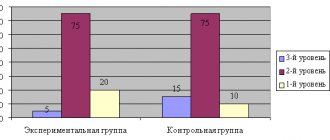Most often, healthy children pronounce their first words at about one year of age. If this does not happen, many parents begin to sound the alarm. However, experts in the field of early development have concluded that the initiation of speech is an individual process for which there is no clear age period. Studies of speech development show that the appearance of speech in a child depends both on the maturation of certain parts of the brain and on the environment in which the child grows. Knowing the characteristics of their child, parents can create a favorable environment for him and help overcome difficulties in the development of your baby's speech.
Speech development at an early age
Sometimes we mistake baby talk for “real” words. A child under one year old tries to repeat the speech of an adult in his own language, often understandable only to his mother. Already a six-month-old baby uses gestures and individual sounds to indicate his needs. Also at this age, the child learns to combine vowels and consonants when pronouncing syllables.
The process of speech development itself is not systematic in children of early and preschool age; very often one can observe leaps in speech development. All children begin to speak at different times. By the age of one year, some children can already pronounce up to 15 separate words. And according to the calculations of child psychologist S. Buller, by the age of 1.5 years, a child’s vocabulary can reach 232 words. At the same time, there are healthy children who at the age of two do not speak a word. Such “silent people” can suddenly begin to speak in whole phrases, catching up and ahead of their peers.
To get a silent child to talk and stimulate the development of his speech, you need to voice your actions, encourage dialogue with the help of questions, listen with interest and try to understand the baby’s answers. Then you will certainly hear that cherished first word.
Features of speech development in children 1 year of age
In the first months after birth, the child listens carefully to his parents and other adults around him. Gradually he learns to distinguish the voices of different people, turns his head towards the sound when they talk to him.
First, the child masters the pronunciation of vowel sounds, then, by about 4 months, the first consonant sounds appear, and the baby begins to roar.
At the age of 6–12 months, the child is already actively imitating the sounds of adult speech. He begins to babble, pronouncing the syllables “pa-pa”, “ma-ma”. At 10 months he begins to respond to his name. By the age of one year, the child begins to pronounce simple words (mom, dad, give, na).
Stages of child speech development
As we have already said, the trajectories of speech development are individual for each child, and therefore psychologists and other specialists in the field of early development do not establish clear standards for speech development in children.
It is important to note that an indicator of speech development is not only the number of sounds and words that a child uses to communicate, but also his passive vocabulary, that is, those words that the child understands. The passive vocabulary is always larger than the active one, so if the child does not speak, but understands your speech, there is most likely no reason to worry.
Speech skills characteristic of the conditional norm in early and junior preschool age are presented in the table.
| Age | Speech development |
| 1-3 months | Scream. |
| 3-6 months | Humming – drawn-out sounds (“a-gu”, “a-gy”, “bu-u”, etc.). |
| 4-5 months | Squealing, laughter. Humming in various intonations. |
| 6 months | Babbling (syllables “ma”, “ba”). |
| 7-8 months | Increasing the number of pronounced sounds, onomatopoeia (“woof-woof”, “pee-pee”), understanding simple words and requests. |
| 9-11 months | Simple words (“mother”, “baba”, “give”, “na”). |
| 1–1.5 years | Simple two-word phrases (“give yum-yum”, “there’s a pussy there”). |
| 2-3 years | Phrases of 2-3 words, the appearance of question words. Naming famous colors, objects, body parts. Learning simple poems, telling short stories. |
| 34 years | Phrases of 4 or more words. A stranger can understand a child’s speech. |
If there is a strong discrepancy between the child’s speech development level and age norms, it is advisable to seek advice from a specialist (neurologist, speech therapist, psychologist) in order to exclude a delay in psycho-speech development.
Symptoms of delayed speech or mental development of a child may include the following:
- Problems with chewing and swallowing food;
- Constantly open mouth, excessive salivation;
- Refusal to communicate;
- Lack of eye contact;
- Slurred speech, “porridge in the mouth”;
- Difficulties in understanding speech (does not respond to requests);
- Inappropriate behavior.
Timely contact with specialists allows you to identify the cause of the child’s delayed speech development as early as possible and develop an individual plan for correctional and developmental classes.
Psychological characteristics and stages of speech formation in preschool children
The psychological features of speech development in preschool children are determined by the fact that each year of their life sets its own pace and rhythm. The years of preschool childhood are filled with the development of actions, the formation of mental processes, and the accumulation of emotional experience.
If you compare what a child was like a year ago and what he became a year later, these changes are striking. Speech skills change dramatically over such a period of time. In a child’s active vocabulary, the number of words can almost double, and statements become figurative and emotional. Every year a preschooler moves to a new level of speech development.
Development of child speech from 3 to 4 years old
What kind of speech baggage do children enter the preschool age period with? They already know more than 1.5 thousand words. Their statements contain almost all parts of speech with a predominance of verbs and nouns.
The child is no longer content with showing actions, but strives to describe and explain them in words. Speech at 3-4 years of age is still ungrammatical. Individual words are combined awkwardly, reflecting solely the child's interest, need and desire. No logic or conclusions can be traced at this stage. The sentences are simple and short.
The child’s thinking is still strongly tied to the visual situation and is based on momentary impressions. Therefore, his speech is situational. This means that without external clues in the form of surrounding objects or phenomena, it is difficult to understand what the baby is talking about.
The child’s phonemic hearing has already been formed, but many sounds are not yet pronounced due to complex articulation. It is especially difficult to cope with words where there are several consonant sounds in a row. Children distort such difficult moments or skip them altogether.
Formation of speech skills in children from 4 to 5 years old
A 4-year-old preschooler has a significant vocabulary and actively uses simple sentences. In some sound combinations it is possible to pronounce sibilants, but the pronunciation is still unstable. The child persistently repeats if those around him cannot understand what he is talking about.
An orientation towards the sound of the word is formed. Children begin to come up with meaningless words, but in such a way that they create a funny rhyme: porridge-baby, kitten-potten...
This desire to look for speech analogies is called word creation. It gradually becomes more active, starting from the age of 3, and is most clearly manifested by the age of 4.5-5 years. This is an original practice that helps the child learn a lot about his native language through experimentation. The appearance of word creation is a sign that the preschooler is beginning to acquire primary literacy skills.
By the age of 5, the grammatical structure of speech in statements acquires a new level. The preschooler composes complex sentences, takes into account the order of words, uses words in the appropriate cases, changes by gender and number.
But not all grammatical forms are distinguished yet. Even five-year-olds, without thinking, can use “I’m taller than Kolya,” “my pencil is thinner,” and other similar statements.
Features of speech development of a preschooler aged 5-7 years
Speech skills rise to a new level in older preschool age, when situational simple sentences are gradually replaced by coherent speech.
Speech that is connected by semantic content is called coherent or contextual. This content quite fully reveals the speaker’s thought or intention, and the thought is expressed in consistently and correctly constructed sentences.
The cognitive speech development of older preschoolers allows them to express their thoughts in understandable language. At this age, children speak with a listener in mind.
A 6-year-old learns speech planning. If earlier words accompanied the action or followed them, then in older preschool age they come to the fore. The preschooler first thinks through and tells what he intends to do.
An important achievement is the emergence of speech forms of activity. The older preschooler perceives listening, telling, reading, and reasoning as activities.
First word
What should a baby's first word be? Early development specialists believe that it does not necessarily have to be familiar and familiar to us. Experts tend to consider any recognizable set of sounds that denote a person, object or action (for example, “baka” instead of “dog”, “ka” instead of “porridge”) as a peculiar word.
Usually children say their first word at the age of 8-9 months. Most often these are onomatopoeias or words of two repeated syllables.
How to understand that a child said exactly a word, and not just a set of sounds? If the child’s statements are repeated under the same circumstances, even if you cannot understand them, rest assured that your baby said a word, his speech apparatus is simply not yet developed enough to pronounce this word legibly. To prevent your child’s speech development from slowing down, you should not speak to your baby in his “baby” language. If your child says “beep beep” while pointing at a car, say, “That’s right, it’s a car.” While walking in the yard, ask your child to show you the car. And to translate the word “car” from a child’s passive vocabulary to an active one, point to the car and ask: “What is that?” Then your baby will certainly learn a new word and learn to pronounce it correctly.
There is a myth that a child’s first word must be the word “mother.” Indeed, some children say “mom” as early as 4-5 months. Also, even before one year old, children can say “Lala”, “Baba”, etc. These are all easy-to-pronounce words that are formed from the repeated babble of a child. The words that are easy to pronounce come first.
How to formulate speech correctly
- Respond to the baby's humming and babbling, imitate his sounds, repeat them.
- Talk to your baby when you are caring for him: swaddling him, feeding him, bathing him. Talk to him throughout the day.
- Read bright, colorful books every day.
- Repeat short rhythmic poems and nursery rhymes.
- Teach your child the names of loved ones and the names of all the objects around him.
- Take your baby with you to new places, be with him in different situations.
- Draw the child's attention to various objects that make sounds (animals, birds, vehicles, etc.).
- Encourage your child to try to pronounce new words.
- “Talk” with your child new situations in which he finds himself, before, during and after the event.
- Look at the baby when you talk to him.
- Describe in detail and colorfully to your child what he hears, sees, does and feels.
- Play children's songs and fairy tales for your baby.
- When talking with your little interlocutor, do not imitate children's pronunciation; make sure that your speech is clear, expressive (but without babying), competent, simple and clear.
- Praise your child every time he initiates communication with you.
- Make sure that your child does not use sound pronunciations to indicate surrounding objects. Parents can use simplified forms of the words “give”, “am-am”, “tu-tu” when communicating with a child under one year old. This will help him get involved in the process of speech development. Then it is advisable to accompany the simplified words with the correct names. He saw the train: “Tut-tut!” - Mom responded: “Yes, the train has left.” The child is asked: “Who is this?” - he answers: “Woof-woof,” - mom explains that “woof” is said by the animal “dog.”
- Be sure to correct mistakes in your child’s speech, do it tactfully, otherwise the child may lose confidence in you.
- Enrich the child’s simplified speech: “More juice,” “Tanya wants more orange juice.”
- Choose not a narrative, but a descriptive style of communication (“There’s a crow flying” - “Look, there’s a crow flying over that house. It’s black and can croak loudly”).
- Listen to your child's answers to your questions, encourage his attempts to speak out.
- Help your child learn to listen and follow instructions through simple requests, naming a sequence of actions (preferably in a playful way): “Go to your room and bring the teddy bear.”
- For the development of a child’s speech abilities, play activities are very important, through which the child learns about the reality around him. So play with your baby!
- Include your child not only in the game, but also in real interaction with all family members. Be sure to give your little one useful tasks. Pass requests to other adults through it. Thank you for your help.
- Read every day; perhaps reading should be part of your evening bedtime ritual.
- Always listen carefully when your child speaks to you.
- Explain to your child what you think, what you plan, what you do, how you reason.
- Ask your child questions, stimulate him to think, encourage him to answer.
- Discuss with your child how he spent the day in kindergarten, how your walk together went. After playing with your child, remember the most interesting moments.
- Use visual materials. It is difficult for children to perceive words separated from an image.
- Show your child that you are listening to him carefully: nod, smile, answer his questions.
- And most importantly: support all your child’s endeavors, praise him even for minor successes.
It is important that the mother (or another adult caring for the baby), despite the workload, maintains a positive attitude towards life and communication. Therefore, take care of yourself, mothers, try to find moments of rest and switch to meeting with friends, favorite books, going to the theater. This is necessary not only for you, but also for your baby!
First phrases
An important stage in speech development is the acquisition of phrasal speech in preschool age. By the age of 1.5–2 years, simple two-word phrases usually appear in speech. The vocabulary is actively increasing, verbs, prepositions, and adverbs are being used. At 2-3 years old, children begin to use adjectives. The age of 3-5 years is often called the age of “why”. During this period, children are interested in everything, eagerly learn about the world around them and, accordingly, ask adults many questions.
If at this age the child does not have phrasal speech, you should consult a specialist. Developmental activities will help fill in the gaps and lay the foundation for the further development of your baby’s speech.
To develop your child’s phrasal speech, you can do the following:
- Read books to your child that are appropriate for his age;
- Look at the pictures;
- Listen to music with your child, sing songs, dance;
- Answer the child’s questions and support his research interest;
- Provide the child with new impressions, discuss what he sees;
- Monitor the purity of your own speech;
- Encourage communication with children.
There are also a number of games and exercises that contribute to the development of a child’s speech. These include:
- Games to develop fine motor skills;
- Articulation gymnastics;
- Finger gymnastics.
You can get acquainted with these and many other useful exercises in classes at. The good thing about these games is that you can play them at home yourself. They not only have a beneficial effect on speech development, but also develop the baby’s attention, memory, and thinking. Perform only those exercises that evoke positive emotions in you and your child, do it unobtrusively and with genuine interest. The most important thing is to enjoy communicating with each other.
Parents' mistakes
Often it is the inattention of parents that leads to disturbances in the child’s speech. The main mistakes that are made in the family:
- Lack of help for the baby. Parents do not pay attention to communication.
- Adults “lisp”, distorting speech, giving the child the wrong role models.
The child remembers that his parents like his soft, childish pronunciation and is in no hurry to get rid of it, thus receiving love.
- Ignoring developmental delays.
- Reluctance to correct speech (including your own, for example, pronunciation defects, haste).
- Poor speech experience in a child. The baby is simply not taught to talk, and it is difficult for him to communicate, he does not know how to do this.
- Parents are tired and not ready to talk; it is easier for them to provide their child with a computer or phone with games.
- Adults read little to children.
conclusions
Speech development is a complex process, and it occurs differently for each child. Experts identify several stages of speech development in children, each of which involves the development of new speech skills. These stages do not have strict age limits. The transition from one stage of speech development to another can occur either smoothly or abruptly.
If the baby is healthy, speech development occurs naturally when you communicate with him and talk about the world around him. Your child watches you and tries to copy your speech, so it is important to monitor the correctness of your own speech. It is necessary to create a favorable environment for the child in which he can fulfill the needs characteristic of his age. You can offer your child games to develop fine motor skills, as well as introduce them to articulation and finger gymnastics.
If you feel that your baby is experiencing difficulties and the development of his speech is far behind the conventional boundaries of the norm, you need to consult with a specialist to rule out health problems and delayed psycho-speech development.
How to help your child talk
When children begin to speak their first words, they really like it. The main way to help your child speak is to communicate with him as often as possible. In infancy, the baby understands speech on an emotional level, so you need to speak expressively to him. All actions associated with it - bathing, massage, feeding, etc. – accompany with emotionally charged words. Call the baby by name, pronounce the names of things, talk about what the child himself does and how well he does it, and also pick up and repeat all the sounds that he makes.
As they get older, it is better to use short and clear sentences so that the child can observe the movement of the lips and apply the knowledge in his speech. You need to maintain a conversation with your baby, ask him questions and try to have a long conversation.
Read books and sing songs.
You can read a book to your child and show the characters in the pictures. They will attract his attention, and auditory perception will help him remember new words. Learning new songs and short rhymes together develops the speech apparatus and also strengthens the bond with the baby.
Develop fine motor skills.
Fine motor skills are the performance of small movements with the hands, fingers and toes, for example: picking through cereals, playing with beads and buttons.
The brain centers responsible for motor skills and speech are located next to each other, so when motor skills are stimulated, speech development occurs faster. Note to moms and dads:
FrutoNyanya produces puree in packets that are covered with fruit lids. Each fruit cap is an element of a developmental construction set from which you can assemble many figures. We had some food and played! Try games to develop fine motor skills with fruit caps, and also watch Video: Development of gross and fine motor skills
Develop vocabulary.
You can show and name surrounding objects to your child: at home, in the park, at a party. The meaning of objects should be explained in simple language. This way the child will expand his knowledge of the world around him, learn new words and learn to speak faster.
Refuse sign language and distortion of words.
It is better for adults to stop mangling words, because a child learns to speak based on the speech he hears around him. If the baby replaces words with gestures, you can pretend that they are incomprehensible. This will encourage him to speak. You should not make your child cry or become hysterical. You should act gently - ask leading questions, pronounce words one after another.
When to see a doctor
Speech development for each child occurs individually, and it does not matter at what age or how many months mom or dad started speaking. In order to detect delays in a timely manner, you need to undergo regular scheduled examinations with a pediatrician.
If during your next appointment the doctor reveals signs of a speech disorder, you should contact a neurologist and speech therapist. Specialists will draw up a correction plan. It is important that parents actively participate in the treatment process and provide support to the child - the effect of the classes will depend on this.
Games for the development of the articulatory apparatus
Music games
help the child develop speech breathing and provide the opportunity to develop drawn-out pronunciation of vowel sounds and clear pronunciation of consonant sounds. The following activities may help:
- songs with repetition of syllables, for example: “Pee-pee-pee-pee-food! And only then - sleep-pee-food”;
- toys that reproduce animal sounds - they are worth repeating together;
- musical instruments in the game: you need to ask the child to say the name of the instrument and repeat the sounds it makes.
Finger games are the depiction of some rhymes or stories using your fingers. Such activities help to quickly engage the speech center. Finger games use various hand movements - raising and lowering your palms, clapping your hands, as well as bending and straightening your fingers. “Okay, okay” and “The geese were flying,” familiar to everyone from childhood, are perfect for such exercises. More examples of finger games in the article.
Articulation gymnastics
aimed at developing the mobility of the speech organs. It includes exercises for the tongue, cheeks, lips and facial exercises. The following activities are suitable:
- Grimaces: standing together in front of a mirror, smile broadly, stick out your tongue, puff out your cheeks.
- Simple breathing games: blow a candy wrapper off your palm, blow soap bubbles, blow on a dandelion.
- Games with the tongue: hide and show the tongue, make circular movements with the tongue like the hand of a clock, try to reach the tip of the nose with the tongue.







